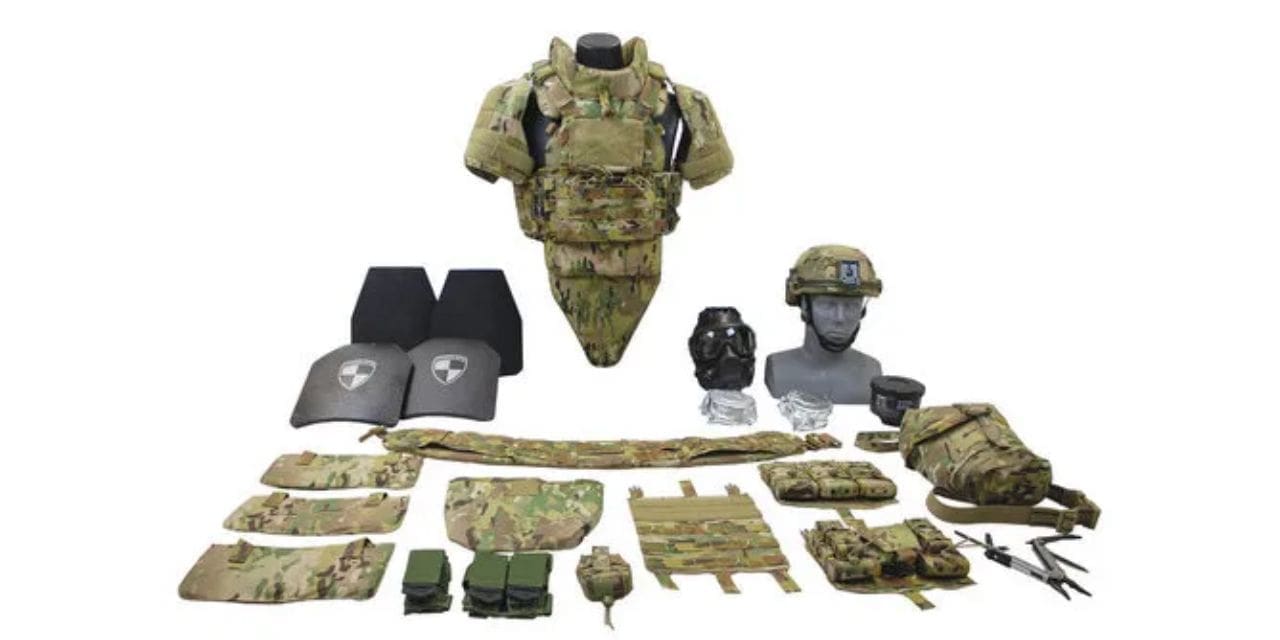The global ballistic protection materials market is expected to attain a valuation of US$ 12.5 billion in 2023 and is projected to reach US$ 24 billion by 2033, capturing a CAGR of 6.7% during the forecast period.
Rising demand for technologically sophisticated equipment, as well as increased research and development to make armor light, are some of the factors predicted to drive the growth of the ballistic protection market during the forecast period.
Ballistic protection is the general word for protective garments used to shield troops or persons from bullets, ammunition, and pieces of exploding items. With the advent of new and harmful weaponry over time, the demand for improved protective equipment is increasing. This equipment is not only light in weight but can also protect the human body from serious injury.
Many innovative materials and fibers have been created over time to improve defense against offensive weapons for this reason. Ballistic protection materials are used to make a variety of protective equipment such as helmets, body armor, vehicle armor, and so on.
The global need for protective equipment is increasing, with every country’s external defense systems expanding practically. In turn, it is predicted to raise demand for ballistic protection materials. Because of the expanding defense sector, the ballistic protection materials market is projected to expand significantly throughout the projected period.
2018 to 2022 Ballistic Protection Materials Demand Analysis vs. Forecast 2023 to 2033
The ballistic protection materials market was worth US$ 9.6 billion in 2018. It accumulated a market value of US$ 11.8 billion in 2022 while expanding at a CAGR of 5.2% during the historical period.
The future holds promising opportunities driven by the surge in defense expenditures and budgets across many countries, as well as the growing need for lightweight materials to counter ballistic threats.
In response to escalating terrorist attacks and cross-border conflicts, military agencies have been compelled to allocate substantial resources toward defense expenditure. These investments include the adoption of ballistic equipment, which offers the advantage of being composed of lightweight and composite materials. These materials provide superior protection compared to traditional metal ballistic armor while minimizing the burden on military personnel. Consequently, the global ballistic protection market is witnessing a substantial increase in demand as ensuring the safety of military personnel remains a top priority.
The development and provision of second-generation enhanced small arms protection inserts (ESAPI) are aiding in market development. These inserts serve as bulletproof vests and are designed to offer protection against high-velocity armor-piercing rounds. The demand for ballistic protection material is further expected to rise due to the factors such as:
- Significant investments in the procurement of ballistic protection plates.
- Increasing demand for ballistic-resistant aerial vehicles.
- Ongoing research and development in the realm of composite materials.
- A growing need for personal protection equipment.
- The utilization of high-strength materials.
How is North America Contributing to the Growth of the Ballistic Protection Materials Market?
According to Future Market Insights, North America is the leading region in the worldwide market for ballistic protection materials. North America’s ballistic protection market size by materials and equipment gained the highest revenue share and is expected to be valued at more than US$ 650 million in 2033.
The regional industry size demand is predicted to increase at a CAGR of 6.8% during the forecast period. Growth criteria for the ballistic protection materials and equipment market in North America are ascribed to the security forces and people’s high awareness of safety, as well as the regional government’s large military expenditure.
Start-ups in the Ballistic Protection Materials Market
Start-ups have a crucial role in recognizing growth prospects and driving industry expansion. Their proficiency in transforming inputs into outputs and adapting to market uncertainties is valuable. In the ballistic protection materials market, several start-ups are engaged in manufacturing and providing related services.
Bnnt Materials is a startup that specializes in the production of Boron Nitride Nanotubes (BNNTs) for various applications, including scientific investigations and commercial product research and development. The company has obtained a license for the technology, which was collaboratively developed by NASA’s Langley Research Center, the USA Department of Energy’s Jefferson Lab, and the National Institute of Aerospace.
Iten Defense develops composite armors, including fiberglass, plastic, and aramid-reinforced options. They supply armor components for integration into final products used in personal protection, architectural reinforcement, ground and military vehicles, watercraft, and aircraft.
HALO Maritime Defense Systems (HMDS) specializes in providing marine security barriers and gates to safeguard valuable assets from water-based attacks. Their resilient composites are specifically designed to withstand harsh marine environments while ensuring zero disruption to the local ecosystem.
Competitive Landscape
The market for ballistic protection materials is highly competitive, with numerous prominent industry players making substantial investments in increasing their manufacturing capabilities.
The key industry players operating in the market are Honeywell International Inc., FY-Composites Oy, TEIJIN LIMITED, BAE Systems, Koninklijke Ten Cate NV, DuPont, Morgan Advanced Materials Plc., ArmorSource LLC, Ceradyne, Inc., Rheinmetall AG
Recent Innovations in the Ballistic Protection Materials Market
In 2022, BAE Systems secured a contract from the United States Army to provide sustainment and technical support services for its M993 Multiple Launch Rocket System carriers and Bradley Fighting Vehicles fleet.
In 2022, BAE Systems secured a contract from the USA Navy to conduct maintenance and modernization on the amphibious assault ship USS Kearsarge (LHD 3).
In October 2021, Saab Barracuda AB and Solarmtex S.A.S, based in Vierzon, France, entered into a cooperation agreement. As per the agreement, Solarmtex is likely to serve as a partner for Saab Barracuda’s signature management and camouflage products in France.

